Explaining the Phases of the Moon for Kids: Easy Tips and Fun Activities
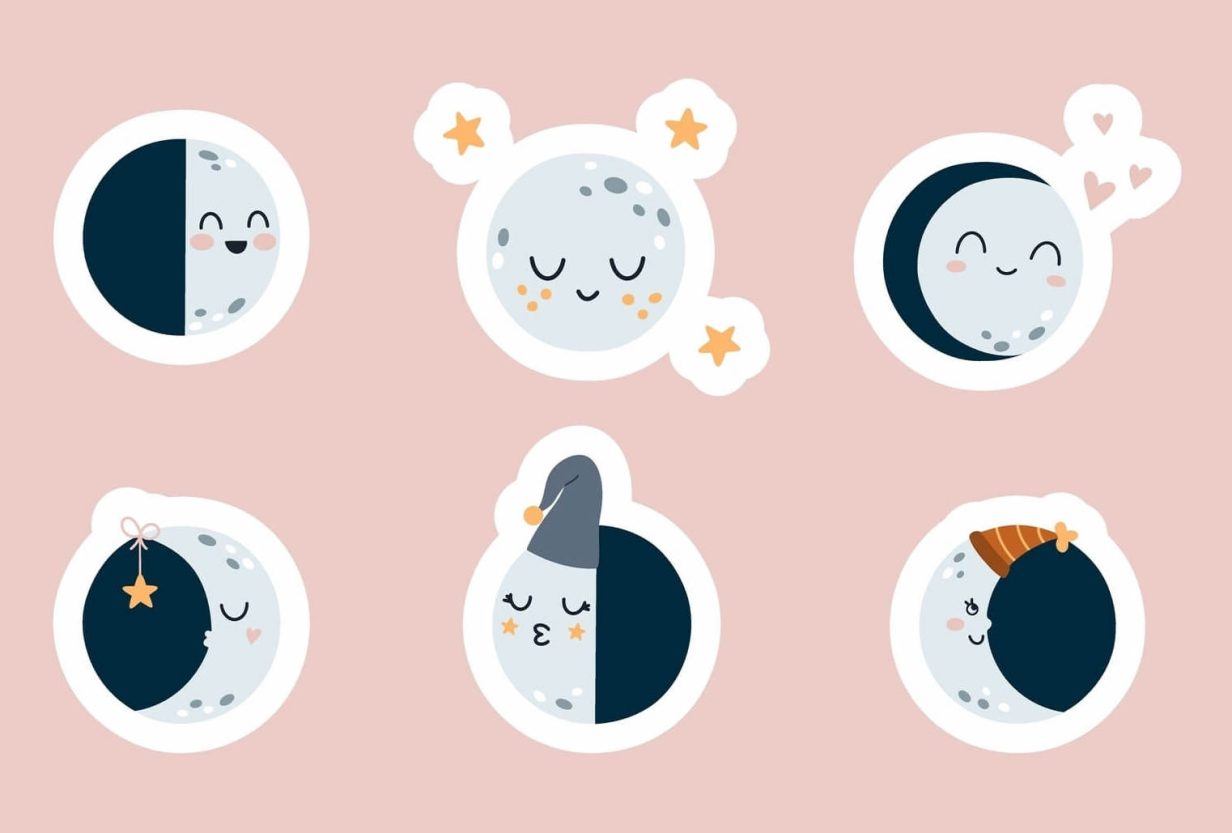
As your child looks up into the night sky and points at the moon shining brightly, they may ask questions about why it looks different sometimes. This is a great opportunity for parents to learn how to explain the phases of the moon for kids and help them understand the meaning and science behind it.
Contents:
- What is the Moon? (For Kids)
- How Do You Explain Moon Phases to Kids?
- What are the Different Phases of the Moon?
- Interesting Facts About the Phases of the Moon
- What Other Information Should You Tell Your Kids About the Moon?
- How Do You Remember the Moon Phases for Kids?
What is the Moon? (For Kids)
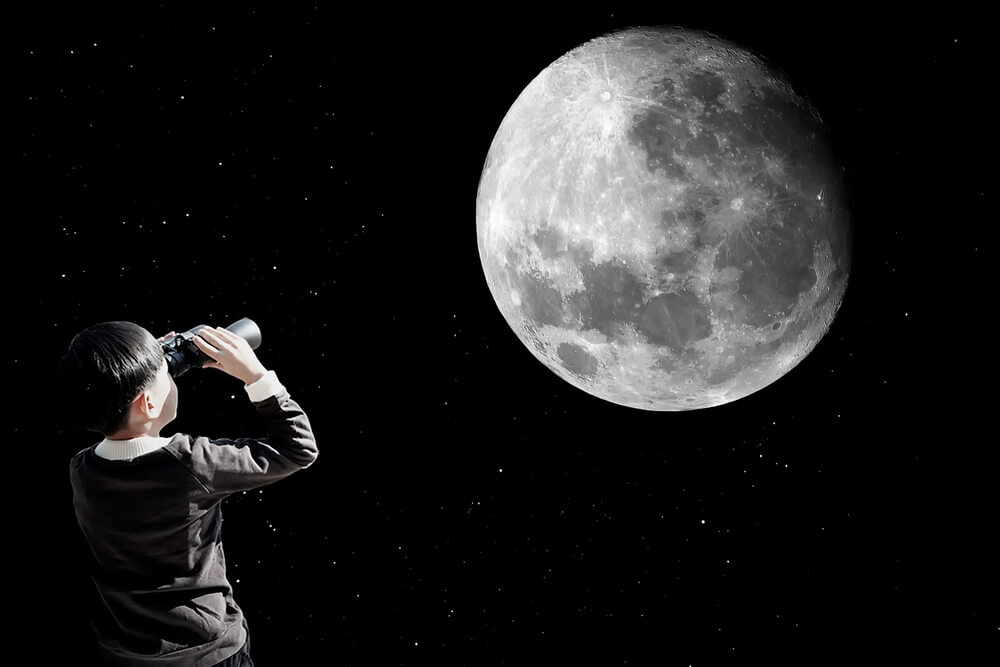
Marti Bug Catcher/Shutterstock.com
The Moon is a big, round rock that orbits, or goes around, the Earth. Imagine it like a giant night light up in the sky!
Even though it looks bright, the Moon doesn’t make its own light. Instead, it reflects light from the Sun, which is why it sometimes looks like it’s glowing.
The Moon is much smaller than the Earth and doesn’t have air like we do, so you wouldn’t be able to breathe there.
Over a month, the Moon changes shape in the sky, which we call phases. Sometimes it looks like a crescent, and sometimes it looks full and round, but it’s always the same Moon!
How Do You Explain Moon Phases to Kids?
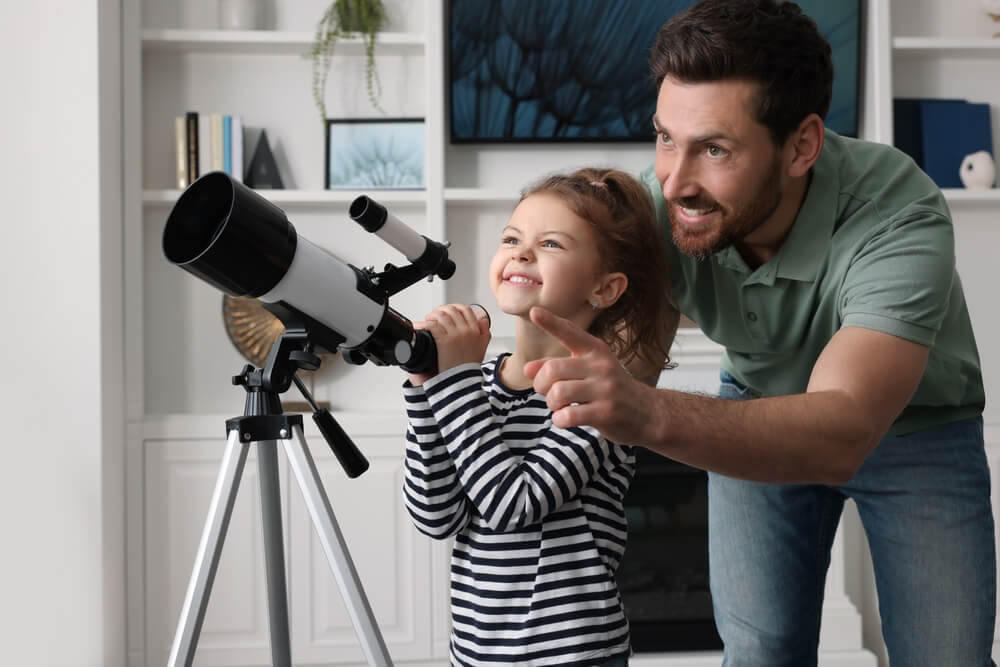
New Africa/Shutterstock.com
The best way to explain moon phases to kids and students is by showing them an example.
Start by using a flashlight, a ball, and a dark room. Explain that the flashlight represents the Sun, the ball is the Moon, and your child is the Earth.
Shine the flashlight on the ball and show how different parts light up as you move the “Moon” around the “Earth.” Tell them the Moon looks different throughout the month because of how the sunlight hits it.
Play with shadows and let them observe how light changes the ball’s appearance. They can see the varying appearances and different sunlit portions as it travels around our planet.
Use simple terms like “growing” for waxing and “shrinking” for waning to make it easier for them to grasp.
What are the Different Phases of the Moon?
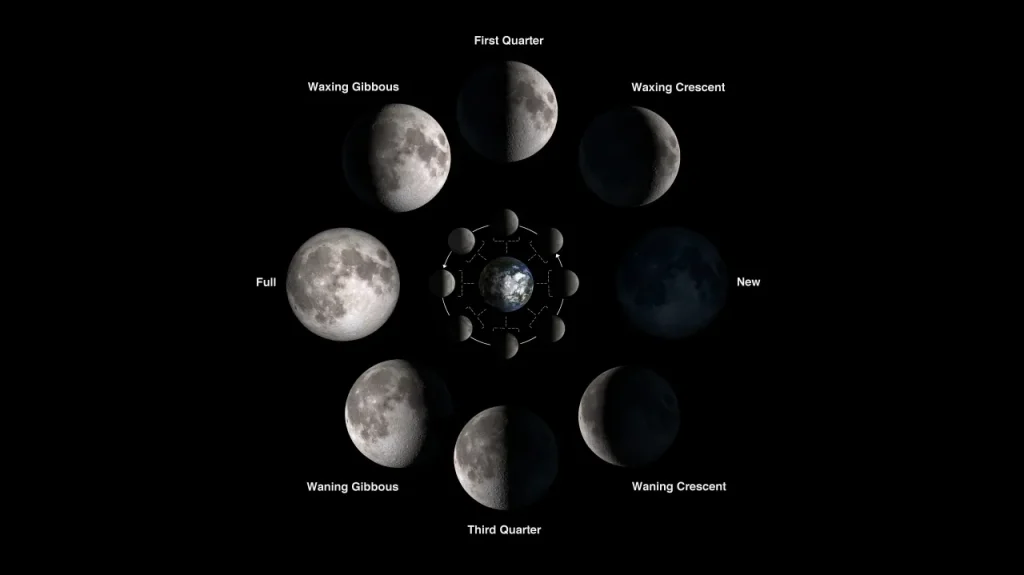
Credit: science.nasa.gov
There are eight different phases that the moon goes through in a 28-day cycle.
- New Moon: The Moon is not visible as it is between Earth and the Sun.
- Waxing Crescent: A small part of the moon starts to show, growing larger each night.
- First Quarter: Half of the Moon is illuminated and visible.
- Waxing Gibbous: More than half of the Moon can be seen, still getting larger.
- Full Moon: The entire face of the Moon is fully illuminated and turned towards Earth.
- Waning Gibbous: The Moon starts to shrink, but more than half is lit and visible.
- Last Quarter: Half of the Moon is illuminated again, but from the opposite side.
- Waning Crescent: Only a small sliver of the Moon is visible before it becomes a New Moon again.
This may also be new and refreshing information for parents who may have forgotten the moon phases from when they were in third grade, making it a learning experience to share with your child.
Interesting Facts About the Phases of the Moon
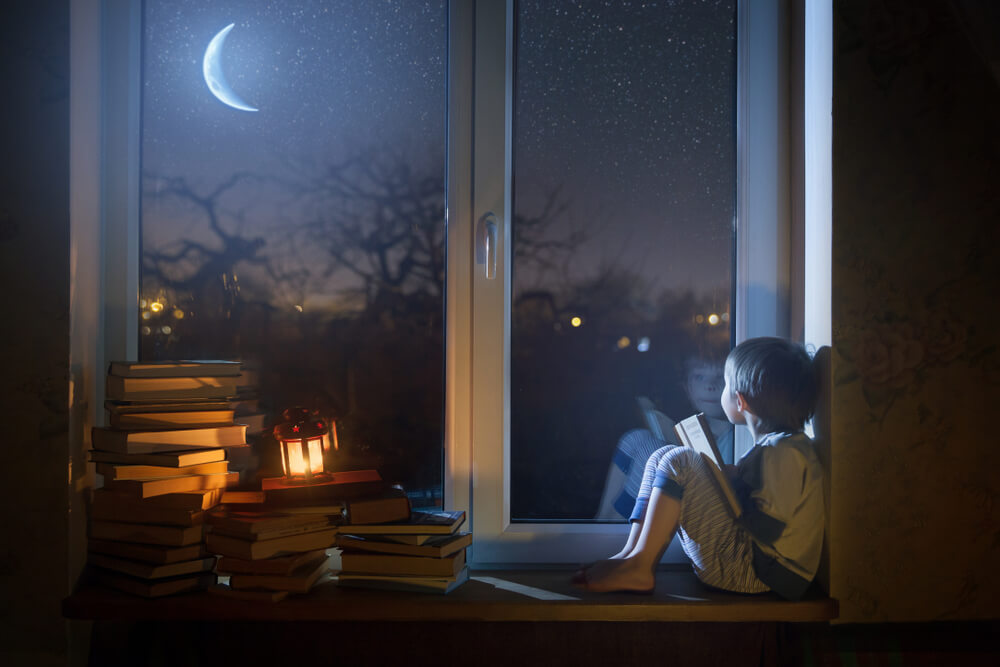
Denys Niezhientsev/Shutterstock.com
Did you know that the phases of the moon are responsible for the ocean tides on Earth? The moon’s gravitational pull creates high and low tides, which are crucial for marine life.
Another fun fact is that the moon always shows the same face to Earth. This is because it takes the moon the same amount of time to rotate on its axis as it does to orbit Earth, a phenomenon called synchronous rotation.
Also, farmers have relied on the lunar phases for centuries when planting crops, as they believed the moon’s cycle influenced plant growth.
Interestingly, during a full moon, the increased light has been known to affect animal behavior, making some nocturnal creatures more active.
Lastly, the term “once in a blue moon” refers to the rare occurrence of having two full moons within a single calendar month, which is indeed a special phenomenon!
Rest assured about your young explorer, no matter where they are or what they’re doing! Let them safely discover the world with the Findmykids app—you will always know where your child is and what’s happening around them.
What Other Information Should You Tell Your Kids About the Moon?
The moon is arguably one of the most fascinating objects in our night sky. It makes kids wonder about space and the solar system. But before they jump into learning about the planets and our galaxy, there is still some more to learn about the moon.
Supermoons

Ivan Morato photography/Shutterstock.com
When a Supermoon occurs, it means the Moon is the closest it can be to Earth during its orbit. This makes the Moon look bigger and brighter than usual. Many kids refer to it as looking like a disk in the sky.
When a full moon or a new moon occurs during this time, it’s called a Supermoon. It’s a great opportunity for kids to notice how magnificent the Moon can look and an excellent time for some moon-gazing activities!
Pink and Blue Moons
A Pink Moon is a name for the first full moon in April and does not actually appear pink. It’s named after pink wildflowers called phlox that bloom in early spring.
A Blue Moon is the second full moon in a single month, which is a rather rare occurrence. Despite its name, it doesn’t turn blue. This is where “once in a blue moon,” comes from, meaning something rare.
Lunar Eclipses

aeonWAVE/Shutterstock.com
A lunar eclipse occurs when the Earth sits between the Sun and the Moon as it orbits, resulting in it blocking light from the sun.
This makes the Moon look dark or sometimes red. It’s like the Earth is casting a shadow on the Moon!
You can see this special event at night, but only when the Sun, Earth, and Moon are lined up perfectly. It’s really cool and pretty rare!
Solar Eclipses
A solar eclipse happens when the Moon is positioned between the Earth and the Sun, blocking the Sun’s light. This can make it look like the daytime sky turns dark, almost as if it’s nighttime!
The Sun, Moon, and Earth have to be exactly lined up for a solar eclipse to occur, which doesn’t happen very often. It’s a spectacular event that you should never look at directly without special glasses.
How Do You Remember the Moon Phases for Kids?
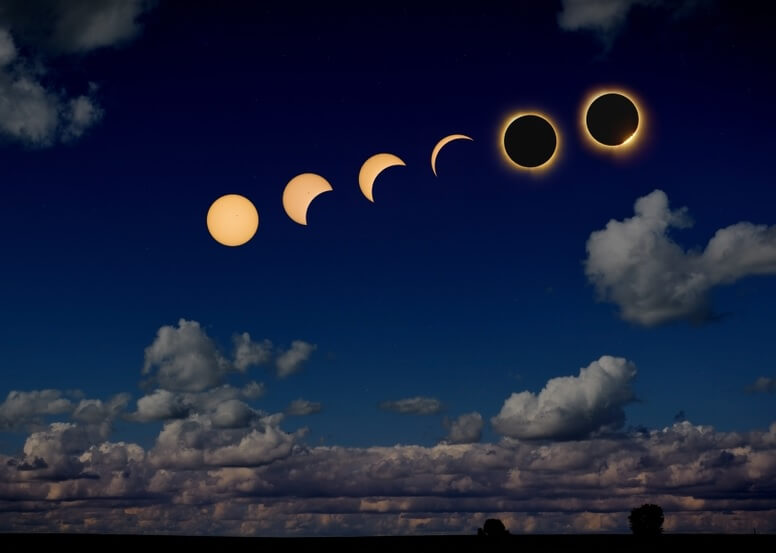
Del Henderson Jr/Shutterstock.com
It can be difficult for parents and kids to remember new information. Below are some easy ideas to help you remember the natural phases of the moon through activities, games, and videos.
Phases of the Moon Crafts
Get creative with your kids by making moon phase crafts and projects!
Try making a moon phase garland using black and white paper circles. Label each phase and arrange them in order.
Another fun craft is using Oreo cookies to represent the moon phases. Simply twist the cookies apart, scrape off the cream to match each phase, and display them on a plate.
For a mess-free option, use stickers or stamps on a paper plate to create a moon phase chart. These activities make learning about the moon phases interactive and fun!
Tips, Games, Exercise, and Videos for Kids
Make learning fun with games like “Moon Phase Match,” where kids can match cards showing different phases with their names.
Another great activity is creating a moon phase calendar; each night, kids draw the moon’s phase.
Don’t forget to check out interactive videos online that explain moon phases in simple terms.
Also, encourage kids to observe the moon every night and draw what they see. This helps them notice the gradual changes.
apps like Sky Tonight can also make observing the moon interactive and exciting, showing real-time moon phases and helping kids connect what they learn to the real world.
Channels like “SciShow Kids” and “NASA Kids” offer great videos explaining the moon phases.
Expand Your Child’s Knowledge with the Phases of the Moon
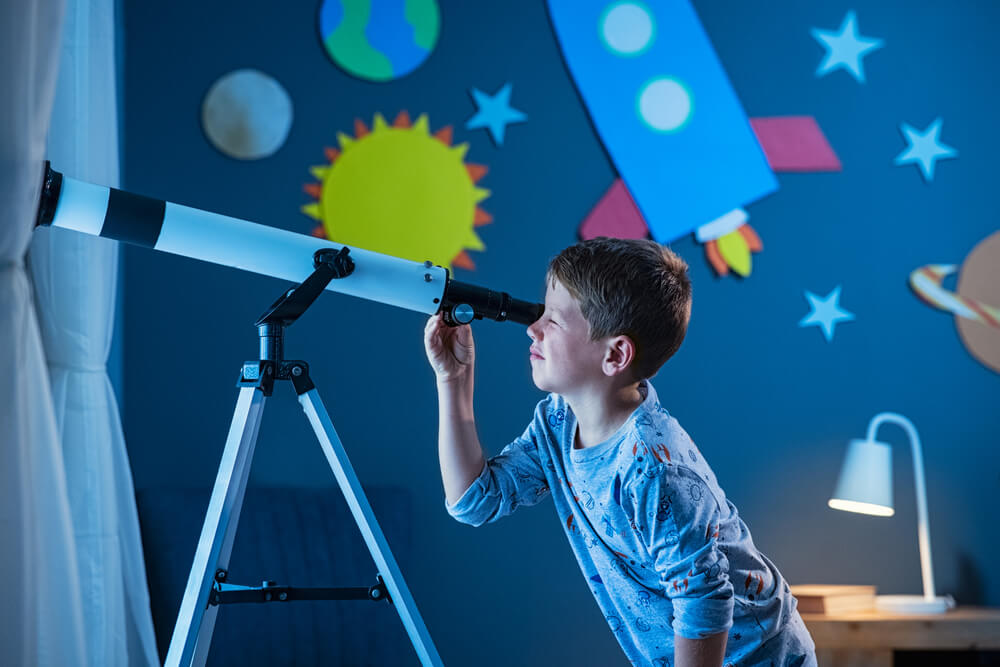
Ground Picture/Shutterstock.com
The world is complicated, especially when it comes to explaining things to your kids. When they begin asking about their surroundings, though, it’s important that parents indulge and know how to answer them.
The next time your child begins asking about the moon, you can tell them all about the different phases, different moons, and eclipses, and engage in fun crafts and games.
If you found this article helpful in learning how to teach the phases of the moon to your child, make sure to share it with a friend—it might help them too!
And don’t forget to ensure your child’s safety with the Findmykids app!
The picture on the front page: Elina Alekseeva/Shutterstock.com
Проверьте электронный ящик



















